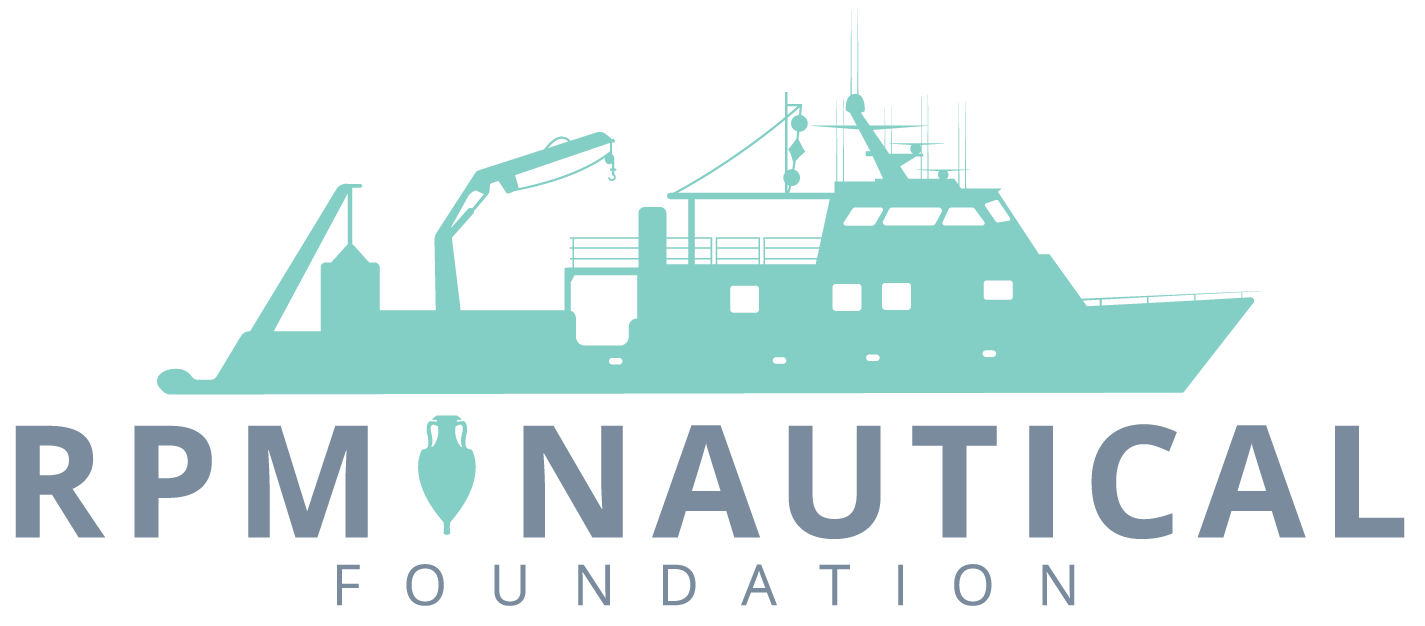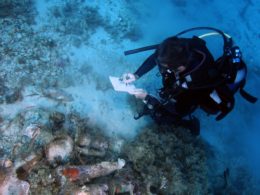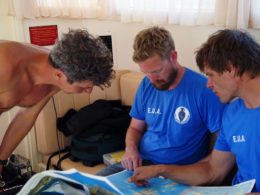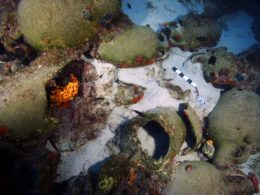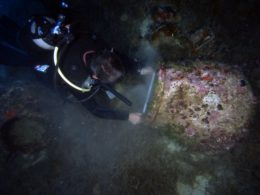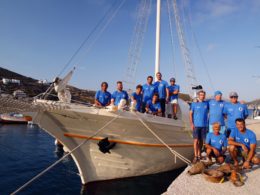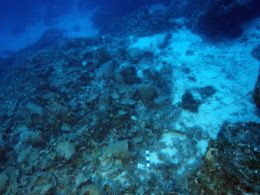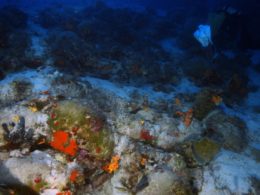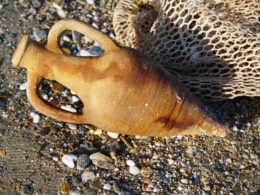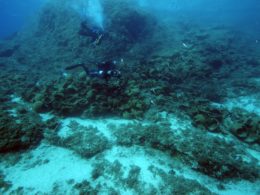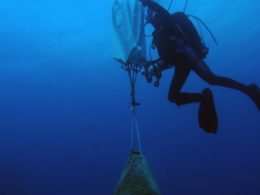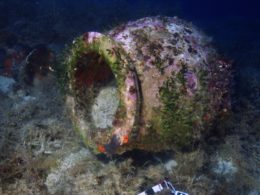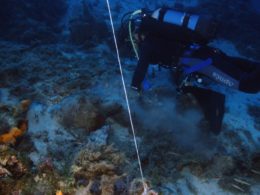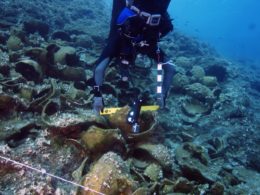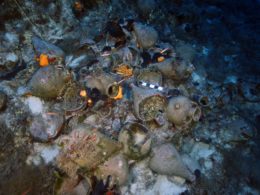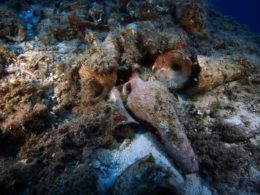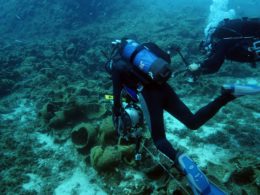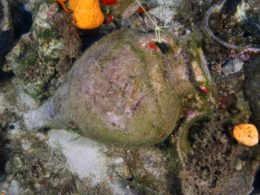Sorry, no content matched your criteria.
Project Duration: 2015-present
 The joint Greek-American expedition to the Fournoi archipelago found twenty-three new shipwrecks dating from the Late Archaic period through the 19th century AD. Twenty-two shipwrecks were identified during the first season in September 2015. This number represents 12% of the known wrecks in Greek waters, demonstrating the navigational significance of the islands. Twenty-three additional shipwrecks were discovered in June 2016, bringing the total to 45 wrecks in the last 9 months. As a substantive dataset of vessels lost underway, as opposed to abandonments or harbor assemblages, the Fournoi assemblage offers a comparative collection for understanding eastern Mediterranean sites.
The joint Greek-American expedition to the Fournoi archipelago found twenty-three new shipwrecks dating from the Late Archaic period through the 19th century AD. Twenty-two shipwrecks were identified during the first season in September 2015. This number represents 12% of the known wrecks in Greek waters, demonstrating the navigational significance of the islands. Twenty-three additional shipwrecks were discovered in June 2016, bringing the total to 45 wrecks in the last 9 months. As a substantive dataset of vessels lost underway, as opposed to abandonments or harbor assemblages, the Fournoi assemblage offers a comparative collection for understanding eastern Mediterranean sites.
The Fournoi Underwater Survey is one of the most exciting projects currently in archaeology. With the identification of 45 shipwrecks and much more coastline to search, Fournoi may have one of the largest concentrations of ancient shipwrecks in the world. This is because the archipelago is situated at a pivotal location within the Aegean. It is one of the few islands with both northern and southern currents. Its location is the convergence of two major sailing routes, used both in Antiquity and today due to the natural condition of winds in the region.
The second season of the Fournoi Underwater Survey was conducted from 8 June to 2 July 2016 and expanded the project, conducting broader surveys to locate additional sites. In addition, more focused research was conducted on each of the previously located sites, supplementing the data collected in 2015. The survey is a collaboration between the Ephorate of Underwater Antiquities/Hellenic Ministry of Culture and Sports and RPM Nautical Foundation. The research is directed by George Koutsouflakis from the EUA and Peter Campbell from RPMNF/University of Southampton. The goal of the survey is the identification and documentation ancient, Medieval, and post-Medieval shipwrecks in the Fournoi archipelago.
The success of the project is attributable to working with the local community. The research consists primarily of scuba diving along the coastline to depths up to 65 meters. The project has covered less than 50% of the archipelago’s coastline with diver surveys, leaving a many regions, especially deepwater areas, to explore. “The concentration of the shipwrecks and the large area remaining to be explored leaves every indication that there are many more sites to discover,” says Peter Campbell, project director from US based RPM Nautical Foundation. “We expect more seasons like these first two. The Fournoi dataset offers great insight into ancient navigation and trade.”
The most significant shipwrecks of 2016 were a Late Archaic-early Classical wreck with amphorae from the eastern Aegean, a Hellenistic cargo of amphoras from Kos, three Roman cargos of Sinopean amphorae, a wreck of North African amphorae of the 3rd-4th century AD, and a cargo of Late Roman tableware. Two massive stone-stocks of ancient anchors dating to the Archaic Period are the largest found in the Aegean so far. The ships span the late Archaic Period (c. 525-480 BC) to the Early Modern Period (c. 1750-1850). Beside shipwrecks, the project documented a large number of finds such as jettisoned pottery and ancient anchors. The finds reveal the importance of eastern Mediterranean trade networks passing by Fournoi in every time period, connecting the Black Sea and Aegean to Cyprus, the Levant, and Egypt. Some shipwrecks even carried goods from North Africa, Spain, and Italy.
Fournoi is a collection of 13 islands and islets between the Aegean islands of Samos and Icaria. The small islands never had large settlements, instead its importance comes from its critical role as an anchorage and navigational point in the eastern Aegean. Fournoi lies along a major east-west crossing route, as well as the primary north-south route that connected the Aegean to the Levant.
For comparison, many larger islands around the Mediterranean have only three or four known shipwrecks. The United States recently created a national marine sanctuary in Lake Michigan to protect 39 known shipwrecks located in 875 square miles. Fournoi has 45 known shipwrecks around its 17 square mile territory.
The expedition was funded by the Honor Frost Foundation, a UK charity founded with an endowment by pioneer maritime archaeologist Honor Frost that funds research in the eastern Mediterranean, and Deep Blue Explorers, a NGO for applied marine and atmospheric science based in Cres, Croatia. Sponsorship and assistance were provided by George Koumbas, Carrefour Ikaria, Municipality of Fournoi Korseon, Business Association of Fournoi, Port Police, and Field Notes.
The previous seasons suggest a great deal more shipwrecks await discovery in the archipelago. The project plans to continue the survey and fully catalog and document the underwater cultural heritage of the archipelago and learn more about ancient trade and navigation in the Aegean Sea. After completing a full survey of the archipelago’s underwater cultural resources, the project will consider excavating shipwrecks of significant scientific value.
